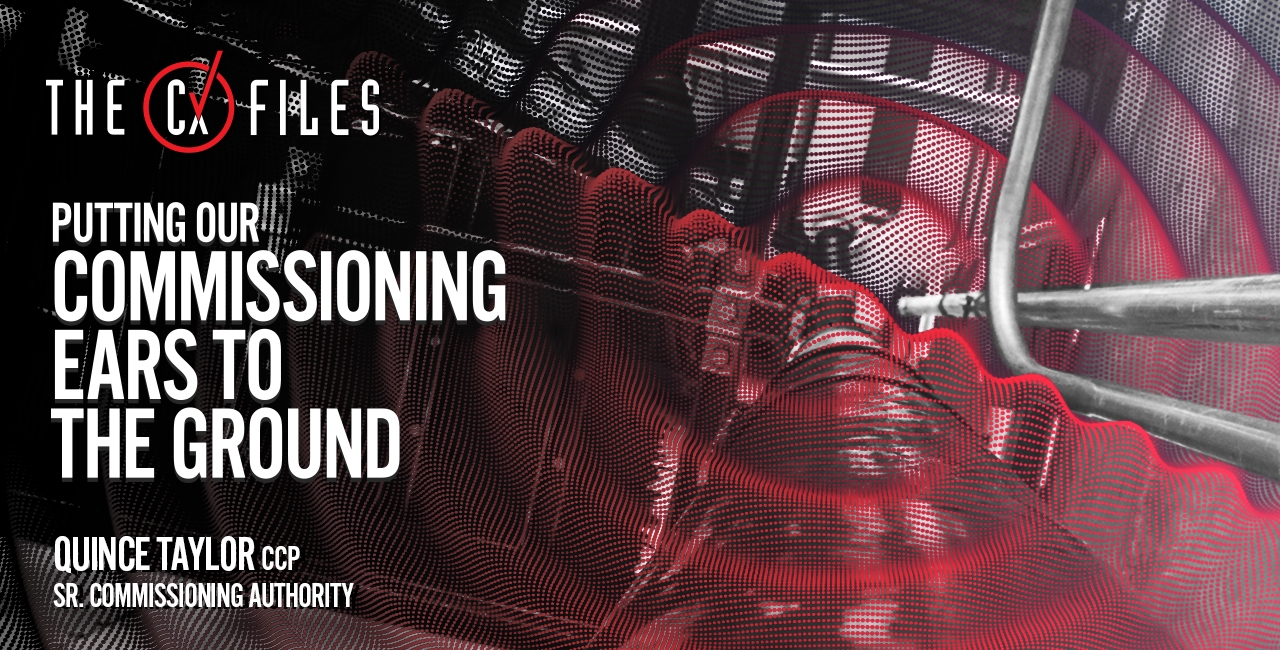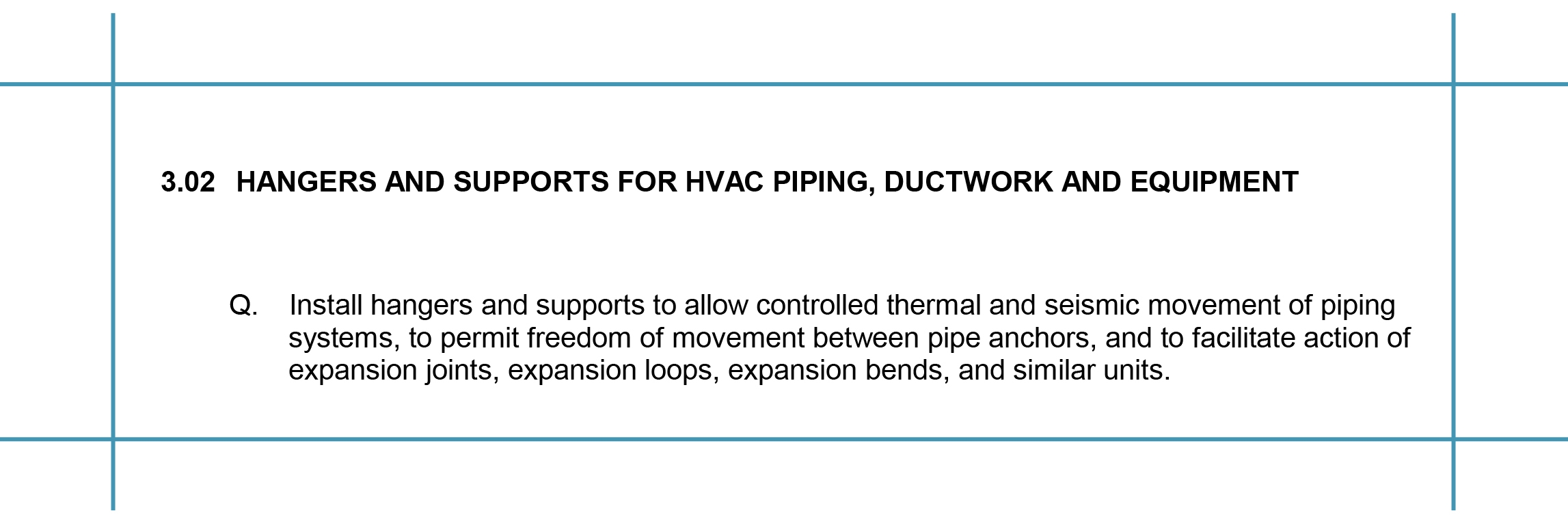
The Cx Files
Chapter 4: Putting Our Commissioning Ears to the Ground
Oct 20, 2022
Quince Taylor, CCP
Sounds make life enjoyable. We cannot always say the same about noise: talking, wind, and noise pollution to name a few. What about an unexpected noise waking you up in the early morning hours?
This was the case with several tenants living in a newly renovated 158 unit, 11-story apartment building located in a big city. Although the tenants were familiar with city noise, this noise was unexpected and annoying. Naturally, complaints poured in.
I’m hearing a constant tick-tock noise in my room and not sure where it’s coming from.
There are vermin inside the walls chewing the building materials.
I want to file a complaint against my neighbor. Their tap dancing or Morse code is waking me up early.
A Clear Definition is Fundamental
The building was in the final phase of a 4-year renovation project, implemented in 3 phases. When the noise complaints started, tenants occupied floors 4 to 10 with partial occupancy on the 3rd floor. Our commissioning (Cx) team was called to coordinate a resolution. The cooperation during the project between the Owner/Architect, General Contractor, Cx, and Sub-contractors created a team approach to resolve this issue. Systematic troubleshooting started with occupant interviews to sharply define the problem.
Do you hear the noise on every floor or only on certain floors?
What type of noise do you hear?
From what part of the wall and ceiling does the noise emanate?
Is the noise heard at night, early morning, or 24/7? Once the noise starts, is it intermittent or constant?
We decided to use a timeline troubleshooting approach to document the above questions which we then documented in Table 1.

Common Denominators
Our Cx team noted common threads.
- The description of noise: tapping sound in nature, slowly intensified, continued, and then abruptly stopped.
- Floor and apartments: occurred on the 3rd and 4th floor of the building.
- The time of occurrence: around 5:00 a.m. and 6:00 a.m.
- Date occurred: the noise went silent on the weekends.
The interviews and pest control team consultation allowed us to at once remove the vermin issue or the tap-dancing neighbor from the possible cause.
Since it occurred mid-week and early morning only, we could schedule a site visit to witness the issue. The owner’s representative made a vacant apartment available to the Cx Agent and mechanical sub-contractor.
We set-up camp at 4:30 a.m. on a midweek day to experience the noise. Sure enough, at 5:00 a.m. the tapping noise started. At first, the noise appeared to originate only from the ceiling, but we then could hear it behind the wall. We put our ears to the ground (the wall) and located a definite source.
Comparing the noise source with the mechanical drawings revealed domestic hot water pipes installed in these exact locations. This led to the “Aha!” moment on the first day of the field test! The Cx team huddled and decided to open one wall section and ceiling drywell to inspect the pipe installation.
The Cause

The building occupancy consisted primarily of tenants who were office professionals. Most started the day Monday to Friday around 5:30 a.m. and began to use the shower and kitchen fixtures. This created the domestic hot water peak demand after the system had been dormant all night.
Why the noise? Pipes will expand and contract when heating up and cooling down. The plumbing pipes cooled down at night. The 5:30 a.m. peak demand caused them to heat up to about 140 Deg F, expand, and generate a tapping noise when sliding on the pipe hangers. Granted, the recent application of PEX (plastic) piping has reduced similar issues.
The Resolution
The hangers and straps holding the pipes in place were loose in a several locations on the 3rd and 4th floor. The installers tightened the hangers and straps. In other locations, the mechanical engineer and contractor coordinated the use of vibration isolating type insulation around the pipe straps prior to retightening efforts.
The owner’s representative and tenant made a case-by-case determination to decide if the pipe expansion noise merited opening and repairing the wall.
Takeaway Points
What can we take away?
- Pipes will expand and contract when heating up and cooling down, also known technically as seismic and thermal movement. Extra attention to hanger and pipe details, specifications, and installation is needed during each project phase.

Hangers and Supports for Plumbing Piping and Equipment Specification (Section 22) - The expansion and contraction of metal HVAC ductwork that conducts airflow and ventilation through the wall cavities and screws attached to air diffusers are subject to the same issue.
- Regarding troubleshooting, our Cx team used a timeline approach to define that it was not the entire building, and it was not 24/7: Two floor levels and occurring around 5:30 a.m.
- Teamwork: It is unfortunate to move to a new home and have unknown noises wake you up. It is also a challenge in this situation since everyone is involved — tenants, owners, contractors, consultants, etc. each with a different educated guess. However, as the Cx agent assigned to coordinate the team and our resolution, we looked at the matter from a positive angle: More input helped to define the trouble.
- The exposure and experience of Cx across various trades such as mechanical, electrical, and plumbing (MEP) makes Cx a key part for troubleshooting and working through the construction and occupancy phases.
In the end, the entire project team delivered a quality project, a real home sweet home for the tenants.